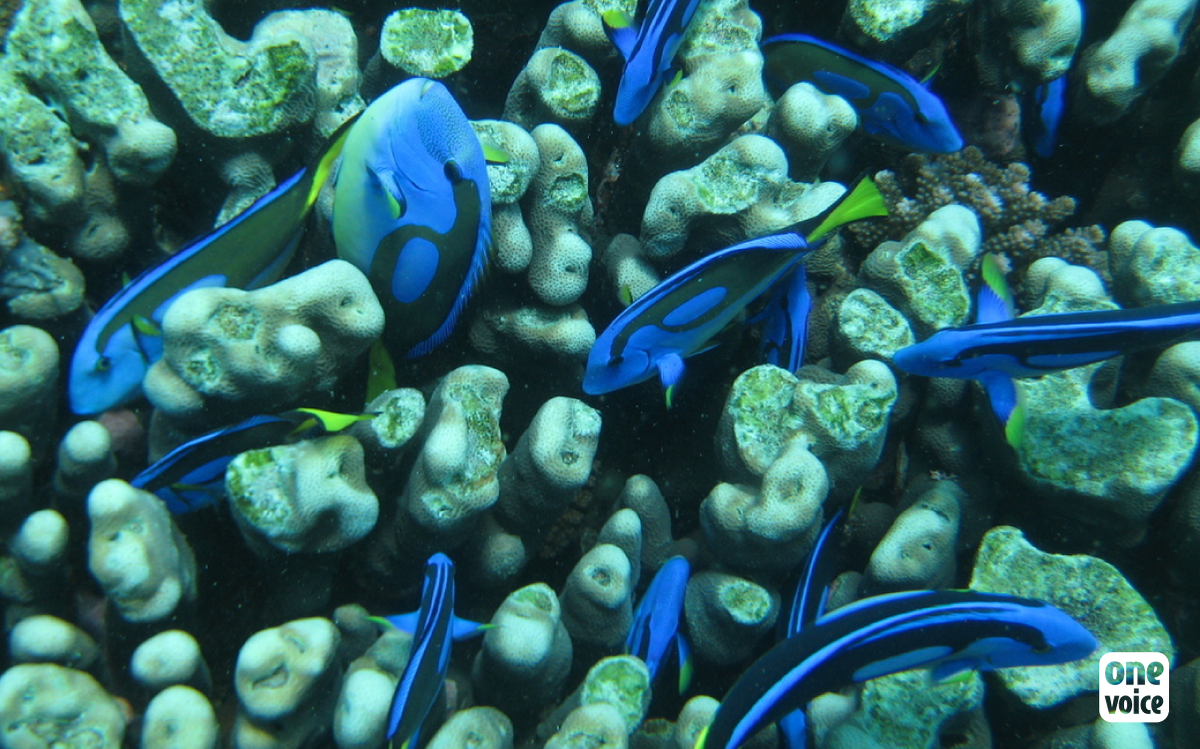

Dory: a message of freedom or the beginnings of a massacre?
Millions of children are waiting with impatience for the release of the film, “Finding Dory”, on the 17th of June 2016. But this global curiosity could be a death wish for its eponymous heroine, Dory, the blue tang fish. One Voice is sounding the alarm for this beautiful creature.
In the sequel to “Finding Nemo”, which featured the clownfish Marlin and Nemo, it’s their forgetful friend Dory’s turn to hold title role.
The scenario has remained secret until now, but the films trailer gives us a glimpse, showing belugas and sharks languishing in pools resembling those of SeaWorld, an octopus trying to escape relentlessly, and tropical fish screaming in terror when a hand descends to seize them at the bottom of their aquarium. The Pixar screenwriters freely admit that they were affected by the Blackfish documentary. Ellen DeGeneres, the voice for Dory, has also made it known that a message for freedom is at the heart of the film. “I think that fish should be in the ocean”, she maintained.
But One Voice is rightly worried about the impact of the wave of popularity for the “blue tang” or “blue surgeonfish”, already being named ‘Dory’ by aquarium lovers. We know that the success of the animated film, “Finding Nemo”, was sadly responsible for the deaths of thousands of clownfish. In effect, running a saltwater aquarium is complicated and beyond the capabilities of a lot of people. In Europe and in the United States, this craze has gone viral, with the rush to have the biggest squid or shark in the sitting room…
The blue surgeonfish can become quite large, requiring a bigger and more expensive aquarium, which is rarely provided. For this reason, few of these fish reach adult age in captivity and all of them die without producing offspring. Like with many other tropical fish, the blue tang is incapable of reproducing in an artificial environment. In France, some sellers will try to make you believe the contrary, but it is not true. This intelligent fish needs a marine environment to socialise and to reproduce its complex rituals.
In the world aquarium market, most saltwater fish are caught in their natural habitat, often illegally, and always in very cruel circumstances. The traffickers spray sodium cyanide on the coral and then collect the temporarily paralysed fish. Some of them suffocate and drown, lots die later. The cyanide also damages the coral, with one square metre of reef destroyed for each living fish taken in this way! The losses are significant but the profits are fabulous… After having crossed the globe by plane in highly oxygenated water, the survivors find themselves stuck in an aquarium, surrounded by fake stones and filter pumps. The blue palette surgeonfish’s home is the coral reefs bubbling with life, sensations and adventures in the warm waters stretching from Eastern Africa to Micronesia. Not this life of infernal boredom locked in a jar, going endlessly round in circles under the blue beam of the aquarium lights…
One Voice is delighted with the strong anti-captivity message of this film, but urges parents to explain to their children that these wonderful creatures belong in the ocean. And we plead with all adults to give up aquarium fish! Fish are also sensitive and conscious beings who suffer equally from having their freedom taken away from them as any other captive human or non-human animal…